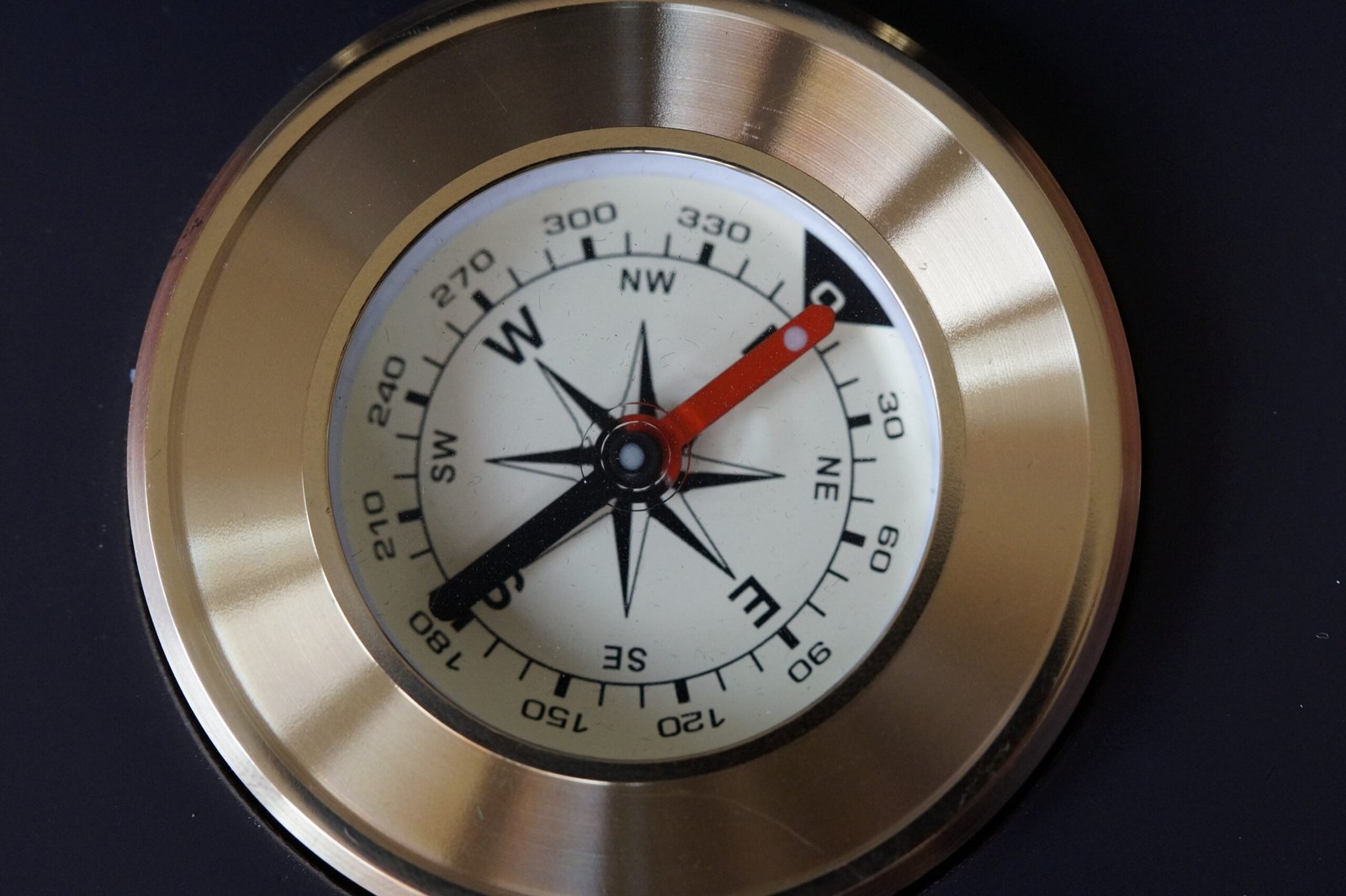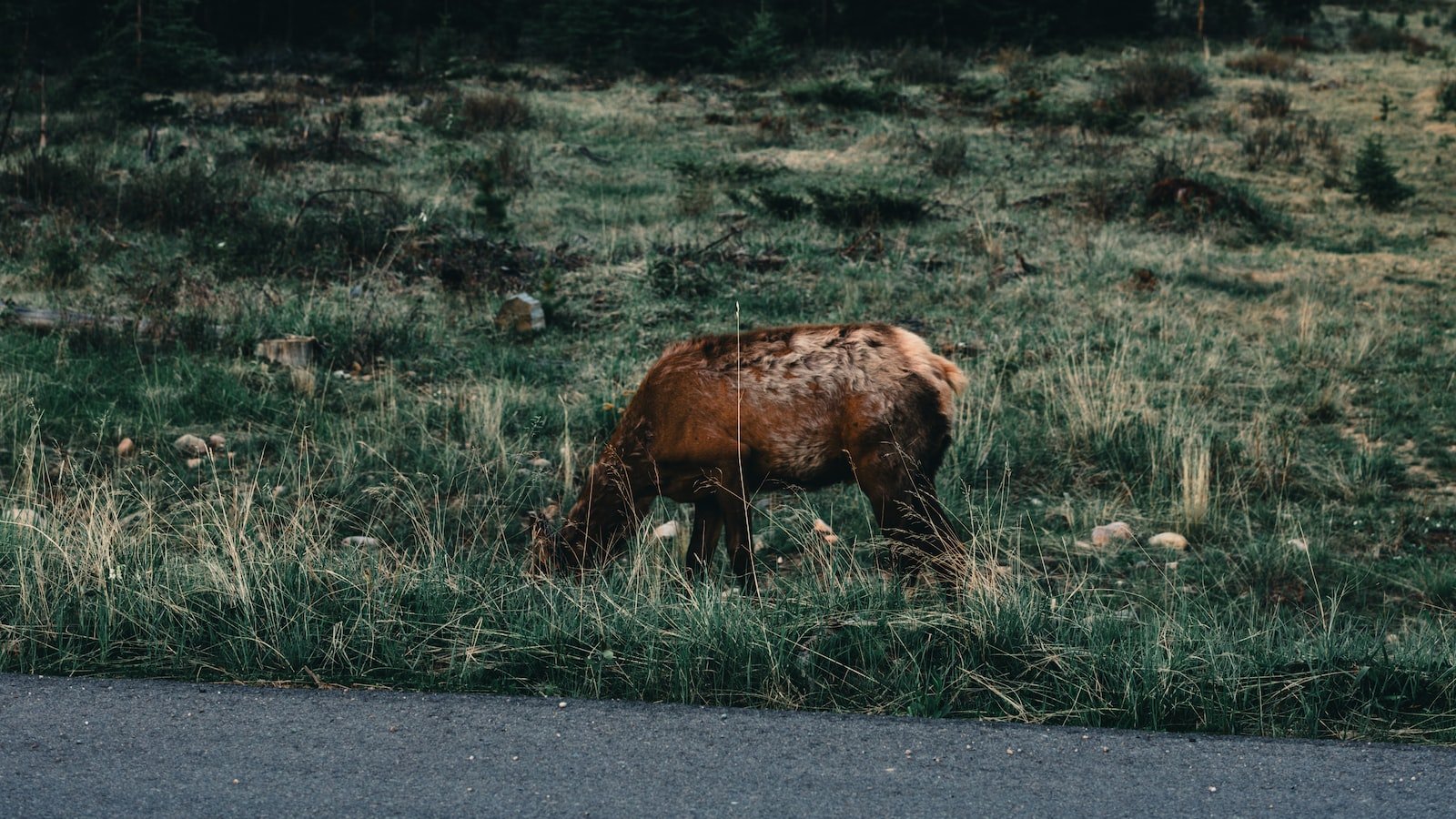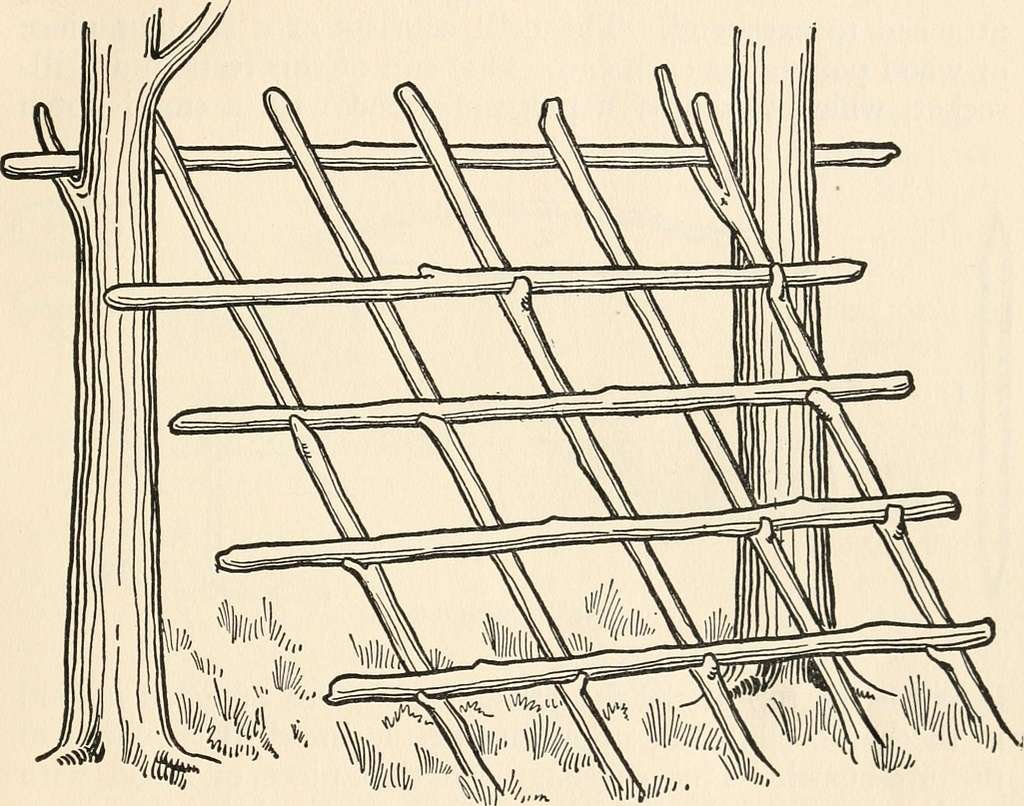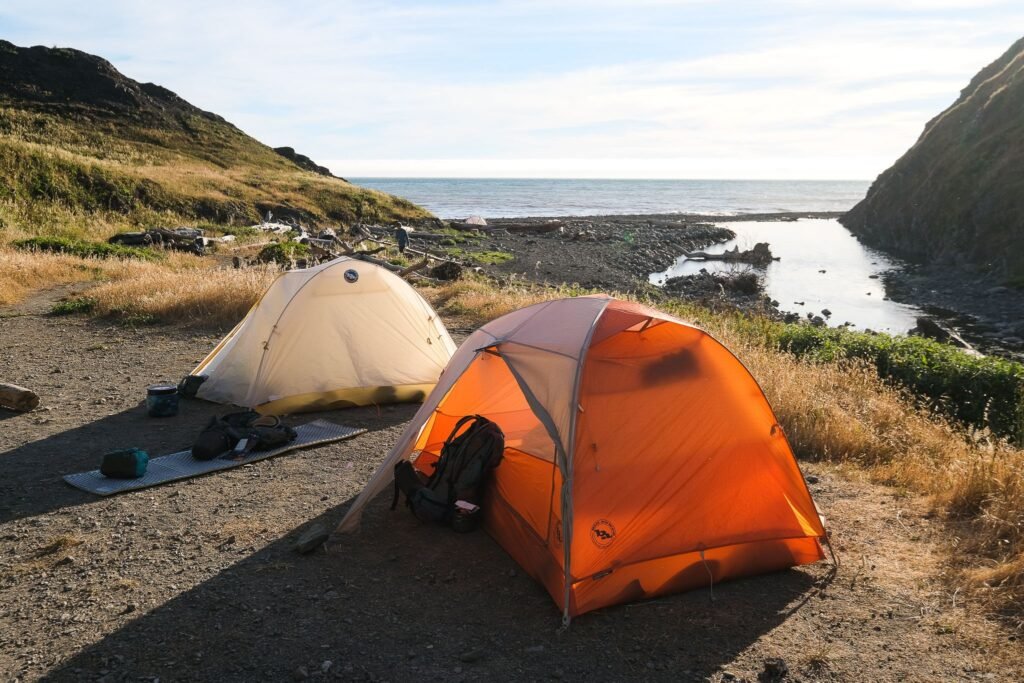Now Reading: How to Navigate the Wilderness Without GPS
-
01
How to Navigate the Wilderness Without GPS

How to Navigate the Wilderness Without GPS
In a world dominated by digital maps and GPS devices, the art of navigating the wilderness has become a lost skill, often replaced by a voice telling us to turn left in 500 feet. But what if we find ourselves without access to technology? What happens when we embark on an adventure where GPS signals are as elusive as the mythical creatures of folklore? Fear not, intrepid explorers, for in this guide we will unravel the mysteries of wilderness navigation and dive deep into the age-old methods that have guided adventurers for centuries. So pack your compass, brush up on your map-reading skills, and prepare to embrace the wild unknown as we unveil the secrets to navigating the untamed frontiers without the aid of modern technology.
Table of Contents
- Setting the Course: Navigating the Wilderness with Confidence
- Unraveling the Secrets of Celestial Navigation in the Great Outdoors
- Ancient Techniques: Mastering Landmarks and Natural Navigation Skills
- Choosing the Right Tools: Essential Equipment for Wilderness Navigation
- Surviving with Skills: Strategies for Orienting and Mapping in the Wild
- Q&A
- Wrapping Up

Setting the Course: Navigating the Wilderness with Confidence
Embarking on a journey into the wilderness can be both exhilarating and daunting. The vast and unknown landscapes may hold countless challenges and opportunities, but with the right mindset and preparation, navigating this untamed territory becomes a thrilling adventure.
Setting the course entails understanding the essentials, equipping oneself with knowledge, and cultivating confidence. Confidence acts as a compass, guiding us through the winding trails and uncharted territories. It starts with recognizing our strengths and embracing our abilities. By acknowledging our strengths, we fortify our resolve, empowering us to tackle any obstacles that may come our way.
Equally vital is acquiring the necessary knowledge and skills to navigate the wilderness. Just like a seasoned explorer, we must familiarize ourselves with the terrain, learn to read the signs, and identify potential risks. Researching the wilderness, studying maps, and consulting experienced guides becomes invaluable when setting the course. Armed with knowledge, our journey becomes not only safer but also enriched.
- Prepare mentally: Cultivate a positive mindset, visualize success, and believe in your abilities.
- Learn from others: Seek advice from seasoned adventurers, lean on their experiences, and learn from their triumphs and mistakes.
- Trust your instincts: While knowledge is important, so is trusting your intuition. Sometimes, the wild offers unexpected delights or prompts us to choose an alternative path.
Navigating the wilderness requires more than just a physical map; it calls for an inner compass built upon confidence, preparedness, and a willingness to adapt. So, let’s ready our gears, steady our minds, and embark on this thrilling journey with our heads held high.

Unraveling the Secrets of Celestial Navigation in the Great Outdoors
Embark on a celestial journey as you dive into the captivating world of celestial navigation. This ancient art of finding your way using the stars has been practiced for centuries, and now it’s time for you to unravel its secrets. Step into the great outdoors and let the vastness of the night sky be your guide.
As you gaze up at the celestial canvas above, you’ll learn the art of identifying constellations and stars. Discover the stories behind these celestial landmarks, each one holding a tale from mythology and ancient cultures. From Orion’s belt to the Big Dipper, each constellation will become a key to unlocking the pathways of the night sky.
But it’s not just about recognizing the constellations. Celestial navigation is a skill that requires precision and calculation. Learn how to use a celestial navigation tool, such as a sextant, to measure angles and determine your position on Earth. Understand the principles of celestial navigation and how they have guided sailors, explorers, and even astronauts throughout history.
What You Will Discover:
- The art of identifying constellations and their stories
- How to use a sextant for celestial navigation
- The principles and history of celestial navigation
- Practical tips for navigating using the stars
- Hands-on exercises to test your newfound skills
The secrets of celestial navigation are waiting to be uncovered. Join us on a celestial adventure in the great outdoors and unlock a world that has guided humanity for centuries.

Ancient Techniques: Mastering Landmarks and Natural Navigation Skills
In a world increasingly reliant on GPS and technology, ancient techniques of navigation are often forgotten, yet they hold the key to mastering landmarks and natural navigation skills. These techniques have been passed down through generations, allowing our ancestors to navigate vast landscapes without the aid of maps or compasses.
One of the most fascinating ancient techniques is the art of celestial navigation. By observing the position of celestial bodies such as the sun, moon, and stars, ancient seafarers were able to determine their direction and location. Knowledge of constellations and their movements helped them navigate across vast oceans, relying solely on their ability to interpret the night sky.
Another essential skill of ancient navigation is the art of wayfinding through natural landmarks. By studying the various features of the land, such as mountains, rivers, and rock formations, ancient travelers were able to create mental maps of their surroundings. These mental maps, combined with an understanding of prevailing winds and weather patterns, allowed them to navigate through unfamiliar territories with astonishing accuracy.
- Celestial navigation: Observing celestial bodies to determine direction and location.
- Wayfinding through natural landmarks: Studying the land and creating mental maps for navigation.
Learning and mastering these ancient techniques not only connects us to the wisdom of our ancestors, but it also provides a sense of empowerment and self-reliance in our modern lives. By rekindling these skills, we can better understand the world around us and navigate through it with a heightened sense of awareness and respect for nature.

Choosing the Right Tools: Essential Equipment for Wilderness Navigation
Maps: The backbone of any wilderness navigation, maps are indispensable tools that provide an overview of the terrain, landmarks, and trails. Be sure to invest in high-quality topographic maps that include contour lines, elevation markers, and important geographical features. Study these maps carefully and familiarize yourself with the symbols and legends to effectively navigate through the wilderness.
Compass: A trusty compass is a must-have for wilderness navigation. It allows you to determine your direction, measure distances, and set accurate bearings. Remember to choose a compass that suits your needs, whether it’s a baseplate compass with a magnifying lens for precise map reading or a mirror compass for advanced navigation techniques.
GPS Device: While traditional navigation tools are essential, a GPS device can provide an extra layer of confidence and precision. These devices use satellite signals to pinpoint your exact location, track your progress, and store waypoints. However, don’t solely rely on a GPS device as technology can fail or run out of batteries, so always carry a backup plan with paper maps and a compass.
Altimeter: If you plan on tackling challenging terrains with varying elevations, an altimeter is a valuable tool. This device measures your altitude and can assist in determining your location and progress. Using an altimeter in conjunction with maps, you can accurately assess the difficulty of the terrain ahead and make informed decisions.
Headlamp: When venturing into the wilderness, it’s important to consider the lighting conditions. A reliable headlamp provides hands-free illumination, allowing you to navigate safely in low-light or dark environments. Look for headlamps with adjustable brightness settings and long battery life to ensure you won’t be left in the dark.
Remember, acquiring the right tools is only the first step. Prioritize gaining knowledge and practice using these tools before setting off on any wilderness adventure. Building your navigation skills will enhance your safety, boost your confidence, and make every journey through the wilderness an unforgettable experience.
Surviving with Skills: Strategies for Orienting and Mapping in the Wild
When it comes to surviving in the wild, one of the most essential skills you need to master is orientation and mapping. Being able to navigate and understand your surroundings can mean the difference between life and death. Here are some strategies to help you confidently find your way:
- Learn to read the stars: Knowing how to navigate using the stars can be a real gamechanger in the wild. Take the time to familiarize yourself with different constellations and their positions. By identifying the North Star or using other star patterns as reference points, you can determine your direction even on the cloudiest of nights.
- Create a makeshift compass: If you find yourself without a compass, don’t panic! Nature provides you with other ways to navigate. Take a magnetized needle and rub it against your clothing to magnetize it. Place the needle on a leaf floating in still water and watch it align with the Earth’s magnetic field. Now you have a simple compass to guide you!
- Master the art of primitive mapping: Without a GPS or a detailed map, you need to rely on your ingenuity to create your own. Look for distinctive natural landmarks such as rivers, mountains, or unique rock formations. Make note of these landmarks and draw a rough map of your surroundings. While it may not be precise, it can serve as a valuable tool to help you navigate and find your way back to safety.
Remember, surviving in the wild requires resourcefulness and adaptability. By honing your skills in orientation and mapping, you’ll be better equipped to tackle any unexpected challenges that may come your way.
Q&A
How can I navigate the wilderness without GPS?
There are several traditional methods you can use to navigate the wilderness without GPS. These include using a compass and a topographic map, observing natural signs like the position of the sun and stars, and developing a keen sense of direction.
Why is it important to navigate the wilderness without GPS?
Navigating the wilderness without GPS allows you to develop important survival skills and become more self-reliant. It also helps you connect with nature on a deeper level and appreciate the art of navigation.
What tools do I need to navigate the wilderness without GPS?
To navigate without GPS, you will need a compass, a topographic map of the area you are exploring, and a watch or other device to track time and calculate your pace. It’s also helpful to have a basic knowledge of the terrain and landmarks in the wilderness.
How does using a compass help in wilderness navigation?
A compass is an essential tool for wilderness navigation as it helps you determine the cardinal directions: North, South, East, and West. By using a compass in conjunction with a topographic map, you can plot your course and easily orient yourself in unfamiliar terrain.
What role do natural signs play in wilderness navigation?
Observing natural signs such as the position of the sun, shadows, and the stars can provide valuable information about direction and time of day. For example, the sun rises in the east and sets in the west, allowing you to determine your general direction.
How can I develop a sense of direction in the wilderness?
Developing a sense of direction requires practice and familiarity with your surroundings. Pay attention to landmarks, distinguish prominent features, and take note of natural signs. Over time, your observation skills will improve, helping you become more confident and accurate in navigating without GPS.
What are some common pitfalls to avoid when navigating the wilderness without GPS?
One common pitfall is relying solely on one method of navigation. It’s important to cross-reference your observations and use multiple tools, such as a compass and a map. Also, be aware of your surroundings and don’t let distractions lead you astray.
How can I prepare for a wilderness adventure without relying on GPS?
To prepare for a wilderness adventure without relying on GPS, familiarize yourself with the area through research and studying topographic maps. Learn how to use a compass properly and practice basic navigation skills. Additionally, invest in a durable compass and a waterproof map case to withstand the rigors of the wilderness.
Wrapping Up
As we bring this enlightening journey to a close, we hope you’ve discovered the captivating art of navigating the wilderness without the grips of modern technology. Embark upon a compelling odyssey where your instincts, wit, and connection to the natural world become your trusted guides.
Unveiling nature’s enigmatic mosaic, we’ve explored ancient techniques that transcend the boundaries of time and leap beyond the confines of GPS devices. Look around and marvel at the newfound confidence emanating from within as you embark upon your next wilderness adventure.
Remember, as you venture forth into the wild unknown, trust the beauty of the pathless woods and embrace the intoxicating allure of self-reliance. Let moss-covered trees become your compass and babbling brooks your North Star. Allow the sun’s gentle touch to guide your steps and let the constellation’s celestial whispers unravel the secrets of navigation.
While modern advancements often lure us with their convenience, allow yourself the liberation of returning to ancient wisdom that reverberates through untamed valleys and lofty peaks. Expand your horizons beyond the confines of technology, for in the wilderness, lies a symphony of boundless possibilities waiting to unfurl.
So, dear wanderers of the wild, as our indelible expedition draws to a close, we implore you to go forth with courage. Remember, you possess the innate ability to navigate the untamed realms, connect with the very essence of nature, and forge an unbreakable bond between the ancient world and the beating heart of modern exploration.
Adorn your pack with knowledge, ignite your spirit with determination, and embrace the sublime dance of human and nature. Together, let us celebrate an era of awe-inspiring wilderness navigation, where GPS loses its grasp and the untrodden path reveals its secrets.
As an affiliate, my content may feature links to products I personally use and recommend. By taking action, like subscribing or making a purchase, you’ll be supporting my work and fueling my taco cravings at the same time. Win-win, right?
Want to read more? Check out our Affiliate Disclosure page.




